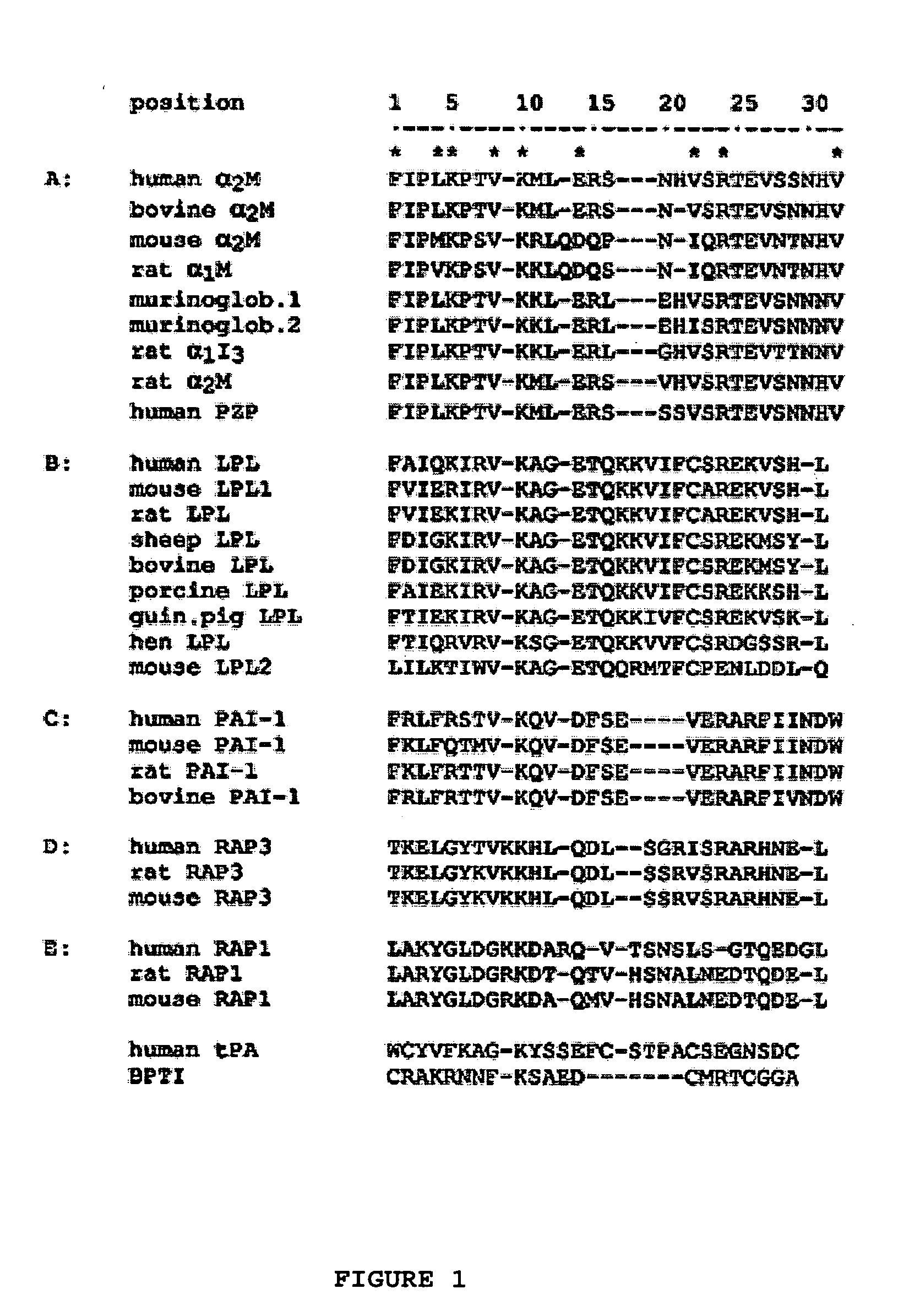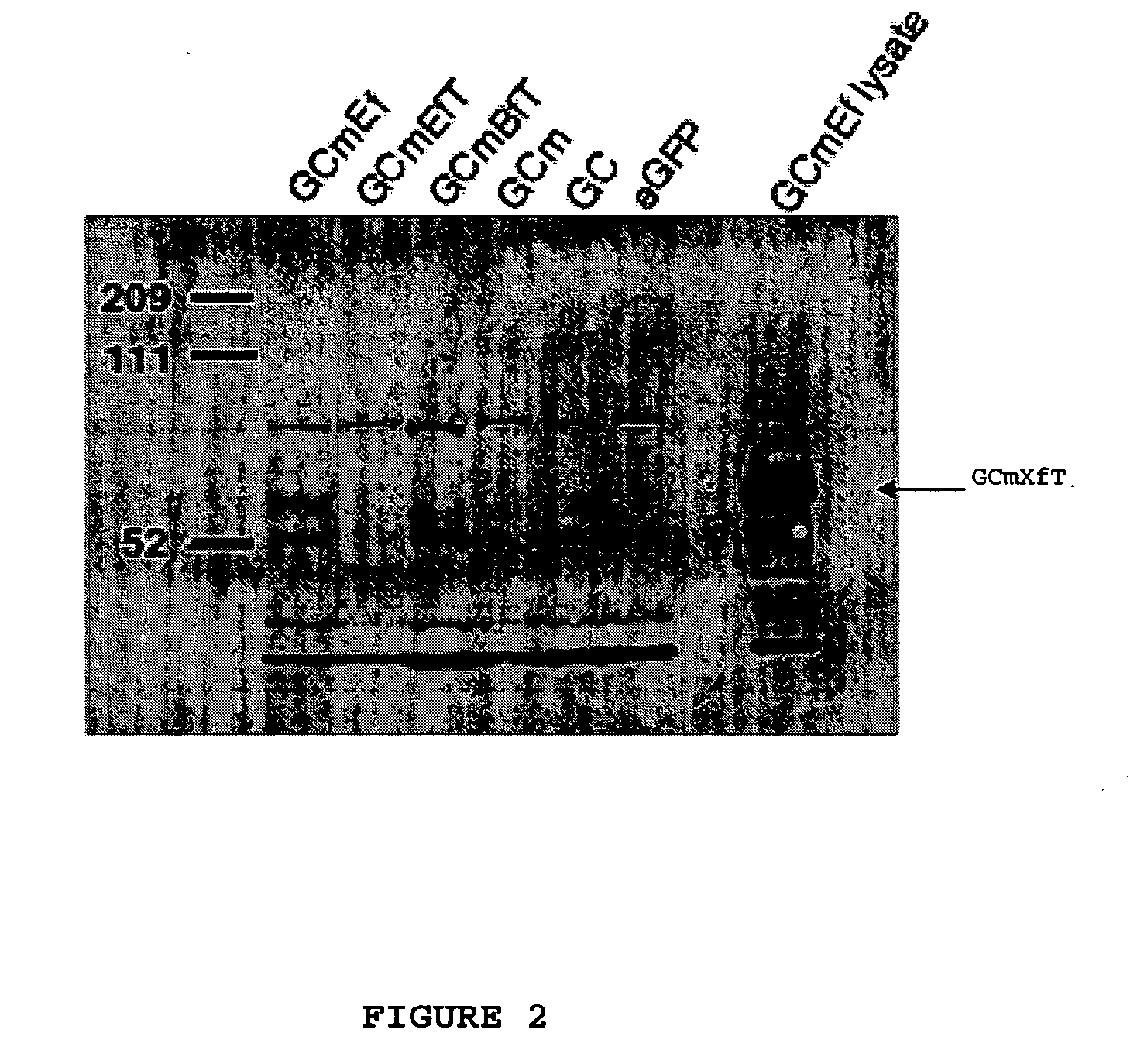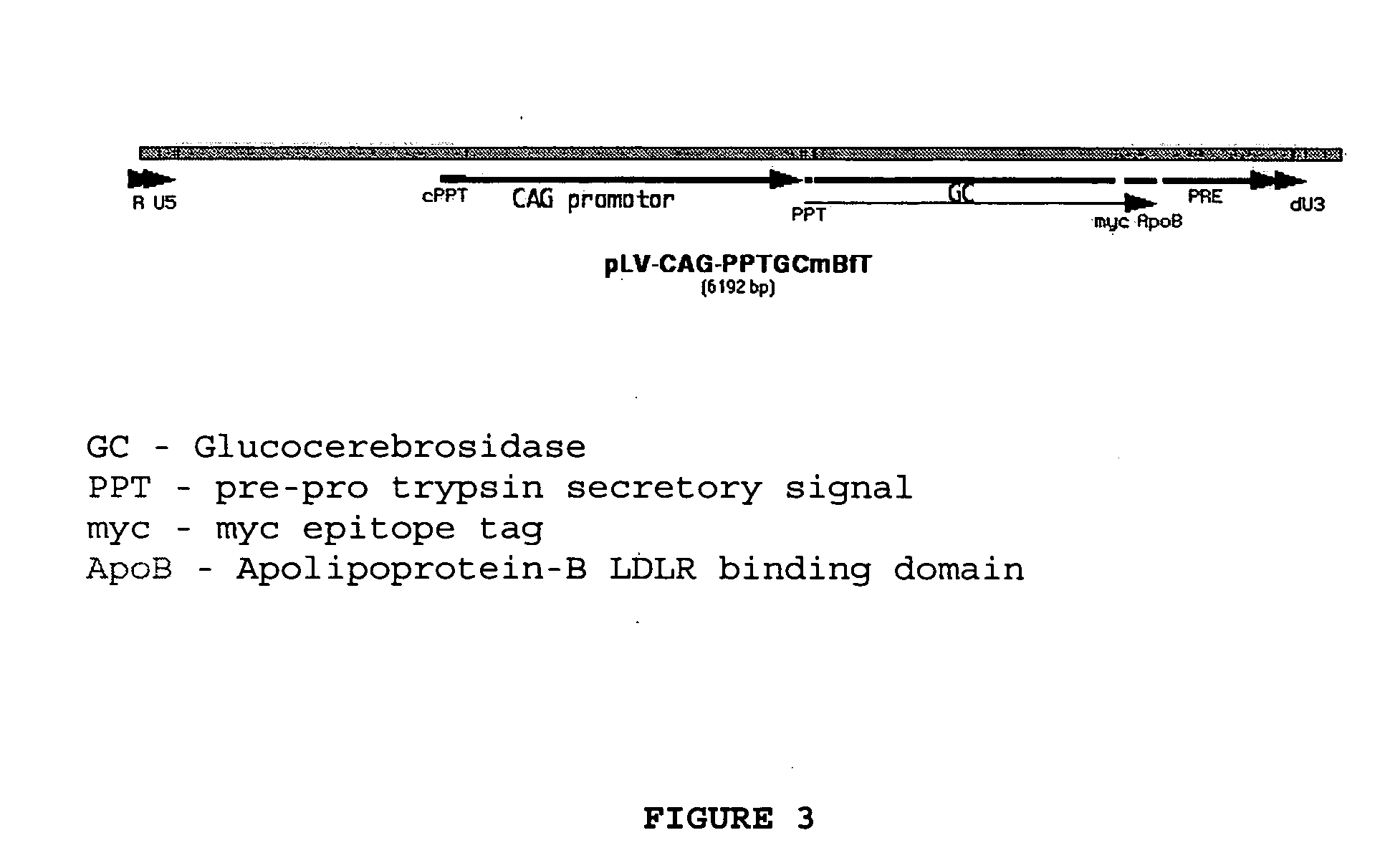Compositions and methods for targeting a polypeptide to the central nervous system
a polypeptide and central nervous system technology, applied in the field of biopharmaceuticals, can solve the problems of neurological symptoms, hematopoetic cell correction has not progressed to the level needed to predictably treat enzyme deficiency disorder, and accumulation of metabolic precursors in the lysosom
- Summary
- Abstract
- Description
- Claims
- Application Information
AI Technical Summary
Benefits of technology
Problems solved by technology
Method used
Image
Examples
example i
Delivery of Glucocerebrosidase to the Liver and Brain for Treatment of Gaucher=s Disease by Targeted Uptake Via the LDL Receptor
[0071] Gaucher's disease is an inherited lysosomal storage disease resulting from mutations and loss of activity of glucocerebrosidase. Symptoms range from painful ‘bone crisis’ and hepatosplenomegaly to neurological disorders and death. There are no known effective treatments for the neurological disorders associated with the more severe Type 2 and Type 3 Gaucher's disease.
[0072] This Example shows the utilization of the transcytosis and uptake potential of the low-density lipoprotein (LDL) receptor as a means to deliver secretory proteins across the blood-brain barrier and to the lysosomes of neurons and astrocytes in the CNS.
[0073] In order to implement a gene delivery therapy for the treatment of Gaucher's disease, a fusion construct was designed such that the glucocerebrosidase gene was fused at the N-terminus with the LDL receptor-binding domain of...
PUM
| Property | Measurement | Unit |
|---|---|---|
| pore size | aaaaa | aaaaa |
| diameter | aaaaa | aaaaa |
| pH | aaaaa | aaaaa |
Abstract
Description
Claims
Application Information
 Login to View More
Login to View More - R&D
- Intellectual Property
- Life Sciences
- Materials
- Tech Scout
- Unparalleled Data Quality
- Higher Quality Content
- 60% Fewer Hallucinations
Browse by: Latest US Patents, China's latest patents, Technical Efficacy Thesaurus, Application Domain, Technology Topic, Popular Technical Reports.
© 2025 PatSnap. All rights reserved.Legal|Privacy policy|Modern Slavery Act Transparency Statement|Sitemap|About US| Contact US: help@patsnap.com



